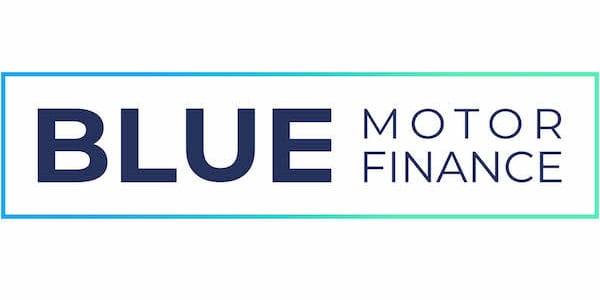Despite fewer new and used car sales, the amount we borrowed to pay for those cars hit a new record in 2022 as total car finance debt continued to increase, according to full-year data published in recent days by the Finance and Leasing Association (FLA).
Total car finance borrowing for 2022 ended up at almost £41 billion, which was up £4 billion compared to the previous year.
More than 2.2 million customers took out car finance agreements last year, about 3% up on the previous year. But the total amount borrowed increased by 9%, with the average finance amount hitting new records for both new and used cars over the course of the year.
There were quite a few interesting points revealed in the data, showing the changing nature of car finance that also suggests further change is on the way this year.
| New car finance | 2022 | 2021 | % change |
|---|---|---|---|
| Number of cars | 684,129 | 737,053 | -7% |
| Total borrowing | £17.3 billion | £17.5 billion | -1% |
| Average borrowing | £25,325 | £23,746 | +6% |
| Used car finance | 2022 | 2021 | % change |
|---|---|---|---|
| Number of cars | 1,530,572 | 1,361,878 | +8% |
| Total borrowing | £23.4 billion | £19.2 billion | +18% |
| Average borrowing | £15,475 | £14,113 | +10% |
| Total car finance | 2022 | 2021 | % change |
|---|---|---|---|
| Number of cars | 2,214,701 | 2,098,031 | +3% |
| Total borrowing | £40.7 billion | £36.7 billion | +9% |
New cars – fewer finance deals thanks to EV shift
Consumer new car registrations were up about 16,000 units in 2022, according to the full-year results published by the Society of Motor Manufacturers and Traders (SMMT) last month. But the number of new car finance deals fell by more than 50,000, which meant it was the lowest number of new cars financed for a decade – even below the chaotic 2020 results.
For the previous four years, more than 90% of new car buyers financed their car through dealer-sourced finance. This is usually provided by the car manufacturer’s official finance company – so, for example, a new Volkswagen customer would almost always finance their vehicle through Volkswagen Financial Services.
In 2022, this number fell to less than 84%, the lowest this has been since 2015. The decline actually started to become noticeable in the second half of 2021 but accelerated through last year.
So what’s the reason for roughly 70,000 new car buyers choosing to finance their cars elsewhere? The answer is the rapidly growing number of new electric vehicle sales, which are often financed differently for tax reasons.
| Year | Consumer new car sales | Consumer new car finance deals | Finance penetration |
|---|---|---|---|
| 2017 | 1,123,885 | 990,029 | 88% |
| 2018 | 1,052,202 | 959,729 | 91% |
| 2019 | 1,018,258 | 933,417 | 92% |
| 2020 | 747,507 | 696,737 | 93% |
| 2021 | 802,504 | 737,053 | 92% |
| 2022 | 818,192 | 684,327 | 84% |
EV customers favouring salary sacrifice over traditional car finance
The FLA’s director of research and chief economist, Geraldine Kilkelly, told The Car Expert that about half of new EV buyers are choosing salary sacrifice over traditional car finance (PCP, HP, etc.).
“We estimate that just under 50% of consumer EV purchases are financed by FLA members, with many opting for salary sacrifice schemes instead for EV purchases,” she said.
Salary sacrifice (known as sal-sac) is attractive for private electric vehicle buyers because of significant tax benefits. With a salary sacrifice scheme, the car payments are taken from an employee’s pre-tax salary so you are literally sacrificing a portion of your salary for a non-cash benefit – in this case, a car.
You have to pay tax on the value of that car, but the taxation rate (called Benefit-in-Kind, or BiK) is much lower for EVs than it is for petrol or diesel cars. Plug-in hybrids used to enjoy a similar benefit, but this has significantly reduced in recent years.
A permanent shift in how new cars are financed?
We explain this in more detail in our handy guide to salary sacrifice for EVs, but the net result is that car companies are not seeing anywhere near as much revenue from customer EV finance agreements.
As EVs are only going to get more popular in coming years, we are likely to see a permanent shift into how new cars are financed. That is, unless the government decides to eliminate this tax benefit…
So far, the chancellor has pledged that new EVs will maintain their Benefit-in-Kind advantage through until at least 2028, so that provides some kind of assurance. But don’t forget that governments (especially this one) can u-turn at a moment’s notice, so don’t necessarily get too comfortable.
By 2028, the new car marketplace is likely to look very different anyway, with EVs likely to be the most dominant type of new car on sale. That’s likely to mean that future governments will start to ratchet up the BiK rate to something more comparable to petrol cars.
Used car finance data impacted by new car shortage
The used car marketplace saw the reverse of new cars, with fewer cars sold overall but more financed via dealership-sourced lenders.
About 600,000 fewer used cars – a 9% decrease – changed hands in 2022 compared to the previous year, according to SMMT data published earlier this month. However, the number of cars financed via FLA members (which is basically all of the main car finance lenders) increased by more than 130,000, which is almost 10%. On top of that, the average amount borrowed jumped substantially.
One of the key factors for this increase in used car financing was the acute shortage of new cars facing most of the car industry during 2022. With hundreds of thousands of customers with expiring PCP finance deals needing to change their cars, there simply weren’t enough new vehicles available. As a result, many people switched to a near-new used car.
This increased demand for used cars has driven up prices significantly right across the marketplace over the last couple of years as more buyers compete for fewer available vehicles.
Two million ‘missing’ cars
Looking back on the last six years of SMMT new car sales data (as shown in the table above), about 2.3 million fewer new cars were sold in the last three years (2020 to 2022) than the previous pre-pandemic years (2017 to 2019).
Even allowing for a gradual decline in new car sales that has been happening since 2016*, that’s still about two million new cars that simply never existed, which will then never flow into the used car market. That, in turn, has a knock-on effect on older new car pricing and will continue to affect used car pricing for years to come.
Over the course of this year, we expect to see used car pricing start to soften as a result of new car production increasing again, which has the twin effects of increasing used car supply and reducing demand. But it could take years for depreciation rates to fall back to what we used to see pre-pandemic.
*I know what 48% of you are thinking, but it’s not (only) a Brexit thing. A large part of declining new car sales has been lengthening car finance cycles as the UK’s PCP car finance boom reached saturation point in the new car market.
Used car market will be more reliant on finance due to EVs
The rapid growth of new EV sales will inevitably result in flow-on growth in the used car market, which will really start to become more noticeable in 2023.
With EVs being substantially more expensive than fossil-fuel cars, and without salary sacrifice or other subsidised finance offers to bring the purchase prices down, that will mean used car buyers will be borrowing more money if they want to drive an electric car.
This means that we’re likely to see used car borrowing continuing to go upwards despite the supply benefits mentioned above.
More finance options than ever before
After a decade of car dealers trying to railroad every customer into a PCP finance agreement, we’re starting to see more awareness of the different finance choices in both the new and used car market. This is a good thing for customers, as better awareness of their options increases the likelihood of them making better decisions for their needs.
In the new car market, there has been some growth in PCH (personal contract hire) leasing, with many leasing companies able to offer lower monthly payments than dealers can offer on a PCP. Some leasing companies are also starting to offer used car leasing, which gives used car customers another option.
As mentioned above, salary sacrifice is taking a large chunk of new EV financing, while car subscriptions continue to make inroads for both new and used car customers.
Although only a small percentage of the overall market, subscriptions can be an excellent gateway for customers who are undecided about switching to an electric car. A short-term subscription of a few months might mean a high monthly payment, but it offers a very low risk compared to thousands of pounds upfront and then a four-year contract for a car that might prove unsuitable.










